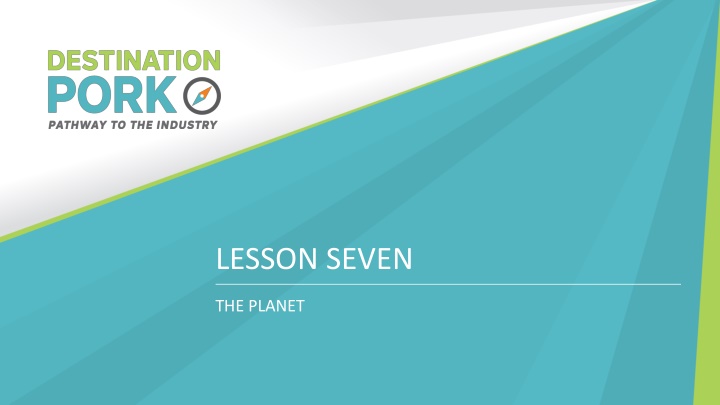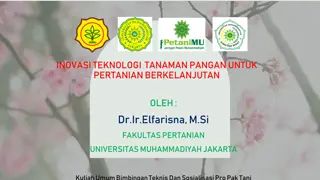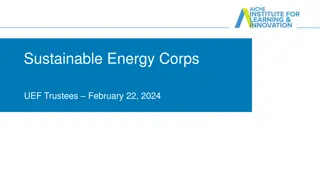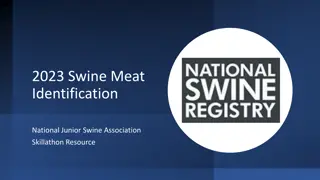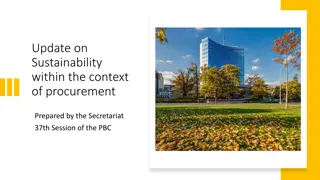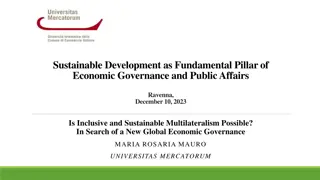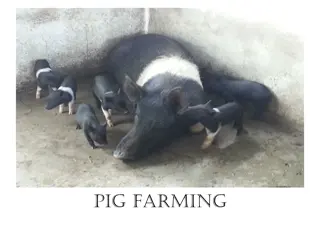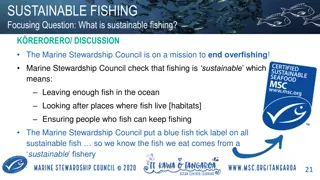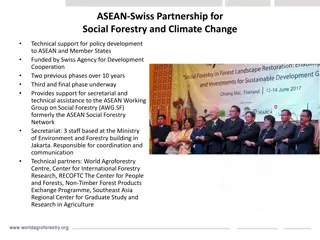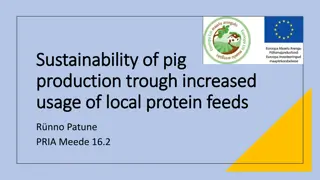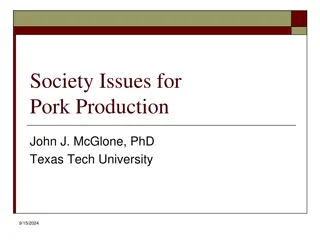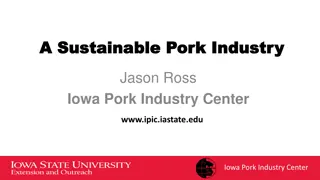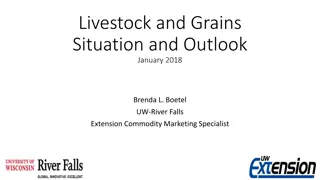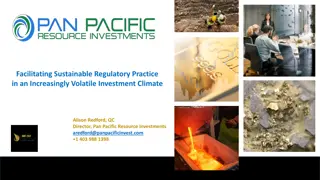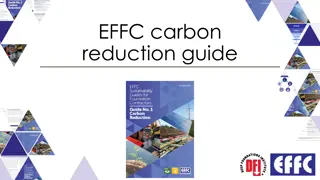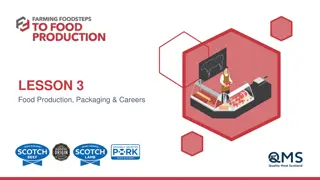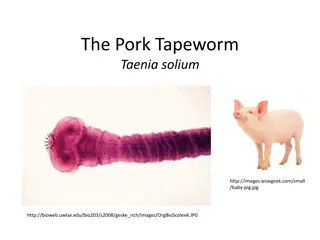Sustainable Practices in the Pork Industry
Explore the essential role of the pork industry in safeguarding the environment through sustainable practices. Investigate how pig farmers understand their impact on air, water, and land resources, and the necessity to meet growing food demands while minimizing their carbon footprint. Learn about the importance of operating sustainably to support a population expected to reach 9.7 billion by 2050.
Download Presentation

Please find below an Image/Link to download the presentation.
The content on the website is provided AS IS for your information and personal use only. It may not be sold, licensed, or shared on other websites without obtaining consent from the author.If you encounter any issues during the download, it is possible that the publisher has removed the file from their server.
You are allowed to download the files provided on this website for personal or commercial use, subject to the condition that they are used lawfully. All files are the property of their respective owners.
The content on the website is provided AS IS for your information and personal use only. It may not be sold, licensed, or shared on other websites without obtaining consent from the author.
E N D
Presentation Transcript
LESSON SEVEN THE PLANET
OBJECTIVES AS A RESULT OF THIS LESSON, THE STUDENT WILL: Investigate and explain how the pork industry operates sustainably to safeguard the environment.
KEY TERMS CARBON FOOTPRINT SUSTAINABILITY
GLOBAL POPULATION IS EXPECTED TO REACH 9.7 BILLION PEOPLE BY 2050.
PIG FARMERS UNDERSTAND THEIR LIVELIHOODS ARE INDIRECTLY TIED TO AIR, WATER, AND LAND.
GLOBAL FOOD PRODUCTION NEEDS TO INCREASE 10-20 PERCENT TO MEET GROWING POPULATION NEEDS BY 2050.
PORK IS THE NO. 1 CONSUMED PROTEIN IN THE WORLD.
PIG FARMERS DO NOT NEED TO BE CONCERNED ABOUT REDUCING THEIR CARBON FOOTPRINT.
PIG FARMERS WILL NEED TO MEET CONSUMER DEMANDS SUSTAINABLY.
OBJECTIVE ONE INVESTIGATE AND EXPLAIN HOW THE PORK INDUSTRY OPERATES SUSTAINABLY TO SAFEGUARD THE ENVIRONMENT.
SUSTAINABILITY CONTINUOUS IMPROVEMENT OVER TIME IN RELATION TO ENVIRONMENTAL, SOCIAL, AND ECONOMIC IMPACT
SUSTAINABILITY ENVIRONMENTAL OUTCOMES INCLUDE: Reduction in use of water, air, and land Carbon neutral by 2030 SOCIAL OUTCOMES INCLUDE: Increase trust in production practices and pork products ECONOMIC OUTCOMES INCLUDE: Freedom to operate and to grow the pork business both domestically and internationally
SUSTAINABILITY PIG FARMERS PLAY AN IMPORTANT ROLE IN TAKING CARE OF THE ENVIRONMENT AND NATURAL RESOURCES. THEY IDENTIFY POTENTIAL ENVIRONMENTAL PROBLEM AREAS AND WORK TO CORRECT THEM. IT IS CRITICAL FOR THE PORK INDUSTRY TO UNDERSTAND AND RECOGNIZE THE IMPACT THEY HAVE ON PREVENTING ENVIRONMENTAL PROBLEMS. THERE ARE FOUR MAIN AREAS OF ENVIRONMENTAL FOCUS FOR PIG PRODUCERS: Air quality Water quality Soil health Carbon footprint
ENVIRONMENTAL FOCUS AREA PROJECT TASK TWO TASK ONE EXPLORE CONTENT ABOUT YOUR ASSIGNED ENVIRONMENTAL FOCUS AREA. CREATE A 60-90 SECOND VIDEO HIGHLIGHTING WHY PIG FARMERS ARE COMMITTED TO SUSTAINABILITY THROUGH THE ENVIRONMENTAL FOCUS AREA YOU WERE ASSIGNED. Examples of what you could cover include how each level of the pork industry (producers, drivers, etc.) are addressing your assigned area, improvements in that area to date, current law that helps protect your assigned area, etc. AS A GROUP, USE WHAT YOU KNOW TO PREDICT HOW PIG FARMING SPECIFICALLY IMPACTS YOUR ASSIGNED ENVIRONMENTAL FOCUS AREA. REVIEW YOUR LIST AND TALLY THE NUMBER OF POSITIVE IMPACTS AND THE NUMBER OF NEGATIVE IMPACTS. ANSWER THE FOLLOWING QUESTION: How does this relate to consumers?
CAREER HIGHLIGHT ENVIRONMENTAL COMPLIANCE MANAGER
TICKET OUT THE DOOR: THEN-NOW-FUTURE RESPOND TO THE FOLLOWING IN THE NOW COLUMN: Summarize information from each group s videos. RESPOND TO THE FOLLOWING IN THE FUTURE COLUMN: How will pork production be different because of environmental sustainability 50 years from now? What creative ways do you think will be implemented to produce more pigs using less resources (land, water, energy)? What can pig farmers do to be more carbon neutral or carbon negative by 2030?
